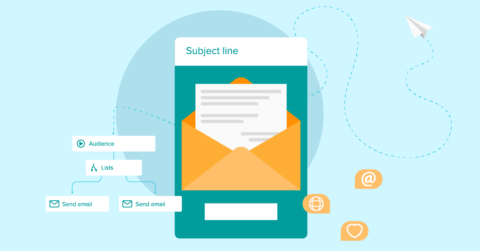
The Ultimate Guide to Hosting a Virtual Fundraising Event
03/29/23
digital design
In recent years, virtual fundraising events have become increasingly popular among nonprofits. The COVID pandemic, in many ways, has only accelerated this trend. After all, for a few years, traditional in-person fundraising events were nearly impossible. This made virtual fundraising events a necessary alternative.
All things considered, hosting a virtual fundraising event can have a host of benefits for your organization. Still, it’s a big undertaking, and it can be difficult to know where to start.
In our latest ultimate guide, we are giving you everything you need to know to successfully run a virtual fundraiser. This includes best practices as well as some resources you can consult for further education.
Let’s dive in.
Download Your PDF Version of this Guide Here
- 9 Reasons You Should Host a Virtual Fundraising Event
- Steps for Hosting a Virtual Fundraising Event
- Best Practices for Hosting a Virtual Fundraising Event
- Resources
9 Reasons You Should Host a Virtual Fundraising Event
Let’s first cover some of the reasons why you might consider hosting a virtual fundraising event. Each organization is different, so be sure to reflect on which of these benefits are most relevant to your own.
Reach a larger audience: A virtual fundraising event simply lets you reach more people. That’s because there are a ton of people that can attend that wouldn’t have been able to for an in-person event. This not only expands your audience, but increases your fundraising potential.
Cost-effective: Let’s be honest: in-person events can be expensive. Not so (usually) with virtual events. That’s because a virtual fundraising event allows you to save money on things like venue rental, catering, and transportation of guests. This makes them a great option for organization on a budget.
More flexibility: Whereas an in-person event will usually follow a strict schedule, virtual fundraisers have a bit more freedom. Simply schedule your event at any time and date that suits your audience. You can even directly ask them via email what date works best for them! This keeps you flexible with your planning.
Accessibility: Virtual events are accessible to just about everybody. All you need is reliable internet connection. This makes them quite accessible to people who might otherwise not attend an in-person event (think about people with any kind of disabilities). If they can make it to a computer or any device with internet, it’s possible for them to attend.
Increased engagement: While not every virtual event will be all that engaging, it’s up to the host to make it so. Consider interactive features like chat rooms, polls, and Q&A sessions. With these features, the people attending your event feel more inclusion and better connect with your organization. This creates a sense of community and increases the odds for donation.
More data: Virtual fundraisers, when set up correctly, provide you with more data than traditional events. That’s because you can track attendance, engagement, and fundraising progress in real-time. Wondering how to do it? Check out these tools for different options for collecting actionable data.

Easier to share: One of the quickest ways that virtual events gain momentum, even before they take place, is through people sharing. Luckily, a virtual fundraiser makes this quite easy. Indeed, all your attendees really have to do is share a link with people they think might be interested. The obvious effect? Increased reach and exposure.
Less environmental impact: Many organizations prioritize lessening their overall environmental impact. Thankfully, virtual events make this easy to do. They require far less energy and resources than in-person events. This not only makes them better for the environment, but is more likely to attract potential donors who have similar values.
More creative options: Lastly, a virtual event opens the door to a ton of potential creativity. This is true at all stages of the event, all the way from planning the fundraiser to how you follow up with attendees. You might also create engaging content promoting your fundraiser in a way that is tailored to your audience. When it comes to creative options for a virtual fundraiser, you are really only limited by your team’s imagination!
Now that we’ve seen some benefits of a virtual fundraiser, you can better understand why your organization should consider hosting one. Let’s move on to the most important steps in setting one up.
Steps for Hosting a Virtual Fundraising Event
If you want to plan a successful virtual fundraising event, you need to approach it with careful preparation and execution.
Here are the most important steps you should follow to ensure that your event runs smoothly:
Define your goals and objectives: Before you start planning your virtual fundraising event, you need to have a clear idea of what you want to achieve. A virtual fundraiser event, after all, can have a wide variety of objectives. These can include the amount of money you want to raise as well as your target audience. A clear goal will help you determine the type of event that will work best for you and enable you to create a focused and effective plan.
Choose the right platform: The platform you choose for your virtual fundraising event is critical. Look for a platform that can handle live streaming, has robust security features, and is easy to use. You might also consider what you have used in the past, as well as platforms you know your audience uses. There are many options available, such as Zoom, Google Meet, Microsoft Teams, and Facebook Live. Research each platform’s features and costs to find the best one for your needs.
Select the date and time: Choose a date and time that works best for your target audience. This includes a number of considerations, including time zones and your audience’s work schedules. It’s also essential to avoid scheduling your event on holidays or major events that could distract potential attendees. Be wary of the large number of factors that may affect participation.
Create a detailed plan: This might be the trickiest step of them all, as it’s the point where you can go a number of directions. It will involve planning out all aspects of your event (just like any aspect of your marketing). This includes the schedule, format, as well as the activities. Decide on the length of your event, the type of content you’ll present, and the order of the presentations. This is also the time you’ll want to start reaching out to potential speakers (if relevant to your event). Which brings us to our next tip…
Secure sponsors and partners: Even if a virtual fundraiser is cheaper than an in-person event, there are still inherent costs involved. This is where sponsors and partners come in. Who can help support your event financially, and which potential partners would stand to receive a benefit from sponsoring your event? It’s time for outreach. Reach out to businesses, organizations, and individuals who share your values and can help you spread the word about your event.
Promote your event: It’s now time to get the word out. This will involve using various marketing channels to promote your event and reach your target audience. Here are just a few assets you can create that will generate interest and drive more attendance to your event:
- A benefit-driven landing page
- Curiosity-provoking social media posts
- Email campaigns to people that might be interested in attending your event
Here’s something else that can get great results – share your event with your current supporters and encourage them to invite others. You might be surprised at the results!
Train your team: Make sure everyone involved in the event is well-trained. They should also be very clear on what their responsibilities will be. This might include managing the chat function, monitoring donations, and presenting content. Everybody involved should also be familiar with the platform you’re using as well as any relevant tools.

Engage your audience: Keep your audience engaged throughout the event with interactive activities and Q&A sessions. Encourage attendees to participate in polls, surveys, and other interactive elements. Make sure your presenters are lively and engaging to keep the audience interested.
Follow up with attendees: This is one of the most important steps. The fact is, a large proportion of your event attendees aren’t going to donate during your event. That’s why follow up is so essential. After the event, be sure to follow up with attendees to thank them for their participation and share the results of the event. Send out donation receipts and updates on how the funds were used. Use this opportunity to build lasting relationships with your supporters and encourage them to participate in future events (as well as donate if they haven’t already).
Be sure to follow these essential steps for your virtual event. This will increase the likelihood that you create an event that engages your audience, raises funds, and supports your organization’s goals.
Best Practices for Hosting a Virtual Fundraising Event
The steps above are a great plan to follow when hosting a virtual fundraising event. Here are some “best practices” that you might also consider:
Plan Ahead: The first step towards a successful virtual fundraiser is all about preparation. Give yourself enough time to plan and prepare for your virtual fundraising event. Make sure you have all the necessary technology and equipment, as well as a clear agenda and schedule for the event.
Engage Your Audience: Connection with your audience is one of the most important factors to a successful fundraising. This is true regardless of whether or not it’s virtual. As for how you do it? Consider features like polls, Q&A sessions, and live chats to engage your audience. This will also make them feel part of the event.
Be Authentic: Another key to success is authenticity. Of course, how you do this will vary depending on your organization. One of the most reliable ways to be authentic is through your messaging. Make sure your message is clear, genuine, and resonates with your audience. You might also consider certain social media marketing best practices, like sharing “behind the scenes” details of preparing your event.
Test Your Technology: As we pointed out above numerous times, preparation is key. The same goes for the technology that you use. Indeed, you have little hope for a good virtual fundraising event if your technology doesn’t work! Test your internet connection, audio and video equipment, and any other tools you plan to use. And of course, have a backup plan in case of technical issues during the event!
Make it Easy to Donate: If the point of a virtual fundraising event is to get your attendees to donate, you need to make things as easy as possible. Every extra second it takes somebody to donate makes it more likely they don’t take action. This is the importance of making things simple. More specifically, make sure you provide clear instructions and make the process straightforward.
Use a Professional Moderator: Most virtual events will have a main host that is responsible for moderating. This is even the case if you have planned numerous speakers throughout the event. While it’s best to have somebody that is well-acquainted with your organization, often experience hosting virtual events is the most important consideration. This ensures you keep the event flowing smoothly and maintain energy and engagement throughout.

Make it Fun: Nobody likes a boring event. Doesn’t matter if it’s in-person or virtual. There are a number of ways to make sure that people are having fun at your event. Try incorporating fun and entertaining elements to keep your audience engaged and excited to donate. You can also get them involved, so they aren’t just sitting behind a screen watching people speak.
Practice, Practice, Practice: Everybody has a plan until reality happens. The fact is, no matter how much you prepare, your virtual event isn’t going to go perfectly according to plan. That’s why practicing is so essential. Rehearse your event with your team to make sure everything runs smoothly. Identify any potential issues and troubleshoot them before the event to avoid any surprises on the day of the event.

Resources
Lastly, here are a few resources you might want to check out. These will help you properly prepare and execute on your dream virtual fundraiser.
Fundraise Up: Make it easy for people during your online event to donate.
TechSoup: TechSoup provides technology solutions for nonprofits and offers a range of resources for virtual fundraising events, including webinars and guides.
Classy: Classy is an online fundraising platform that offers a guide to hosting virtual fundraising events, along with templates, examples, and best practices.
Nonprofit Tech for Good: Nonprofit Tech for Good provides resources for nonprofits looking to leverage technology for fundraising, including a guide to virtual events and webinars.
The Chronicle of Philanthropy: The Chronicle of Philanthropy provides resources for nonprofits on various topics, including virtual fundraising events.
Conclusion
Hosting a virtual fundraiser event is no small task, but we hope our ultimate guide can set you in the right direction.
Follow the steps and best practices above, and read some of our further resources, and your next virtual fundraising event will be your best yet!
Download Your PDF Version of this Guide Here
…
Are you an enterprise, nonprofit or small business looking for help on your website? Give us a shout! We provide a free consultation. Email us at info@lughstudio.com or call us at (718) 855-1919!









